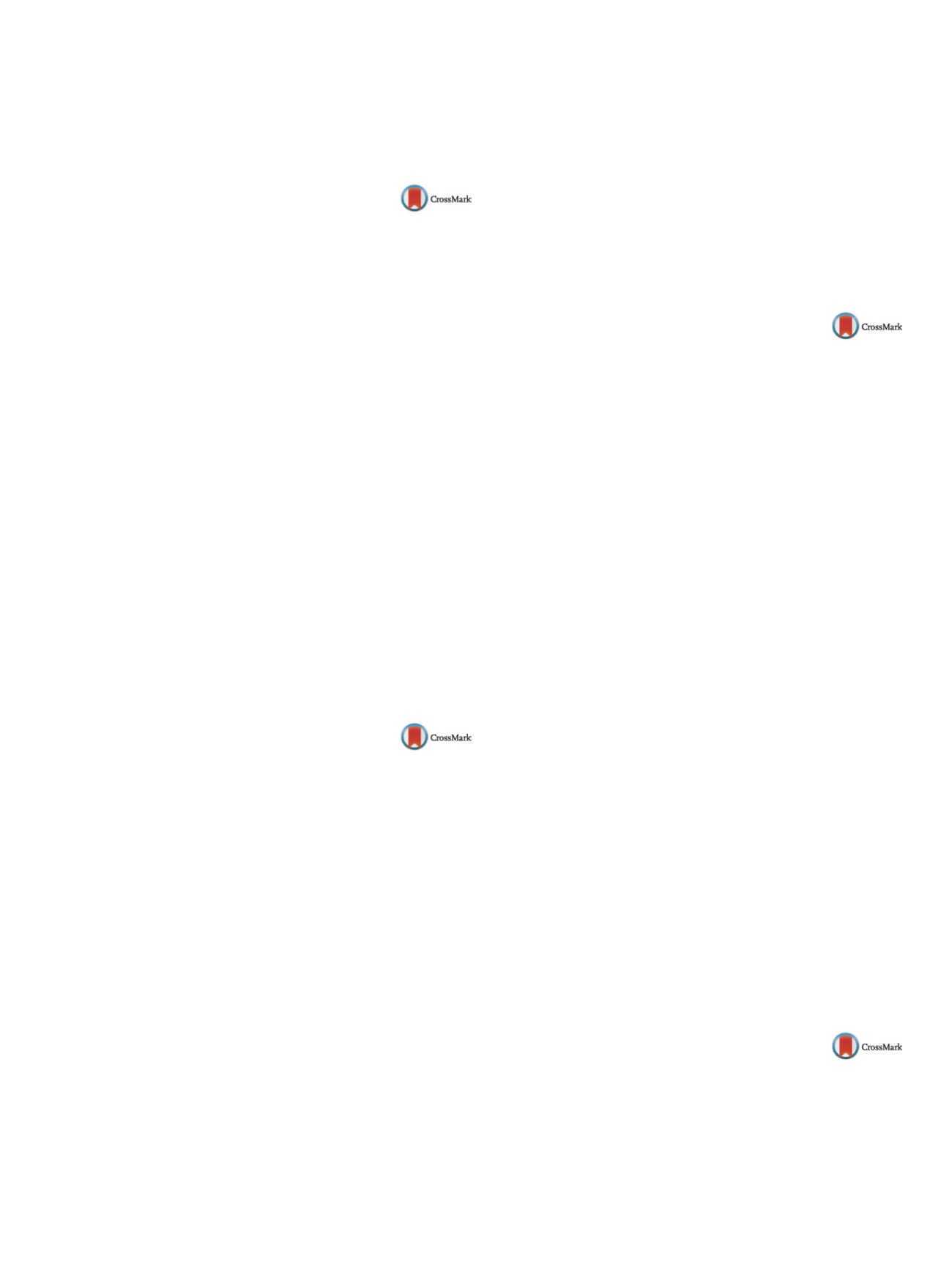

25th European Congress of Psychiatry / European Psychiatry 41S (2017) S710–S771
S725
Disclosure of interest
The authors have not supplied their decla-
ration of competing interest.
http://dx.doi.org/10.1016/j.eurpsy.2017.01.1315EV0986
Clinical features of PTSD and
adjustment disorders in refugees
from the zone ATO
H. Kozhyna
∗
, V. Korostiy , V. Mykhaylov
Kharkiv National Medical University, Psychiatry, Narcology and
Medical Psychology, Kharkiv, Ukraine
∗
Corresponding author.
Aim
To study clinical features of PTSD and adjustment disorders
in refugees from the zone ATO.
Methods
We have a complex psychopathological and psychodi-
agnostic research 156 refugees in volunteer center in Kharkiv.
Results
Among the IDPs observed, 75.9% have violations of
adaptation: long-term depressive reaction and predominant dis-
turbance of other emotions. The men reactive alarm indicators
(average – 37.7
±
3.0), were higher than trait anxiety (aver-
age – 32.6
±
2.9). On the contrary, women figures trait anxiety
(average – 38.6
±
2.9) were higher than reactive anxiety (aver-
age – 34.7
±
3.0). Severity of depressive symptoms also slightly
prevailed in women. The mean score on the Hamilton scale for men
was 17.0
±
2.3 points, women – 18.0
±
2.3 points.
Test results on a scale of quality of life showed no significant dif-
ferences between men and women. We have developed a medical
and psychological support system to correct the neurotic disorders
in refugees.
Conclusions
The majority of people who left the ATO zone have
psycho-emotional disorders of different severity and require a fur-
ther correction in the specialized medical institutions.
Disclosure of interest
The authors have not supplied their decla-
ration of competing interest.
http://dx.doi.org/10.1016/j.eurpsy.2017.01.1316EV0987
Complex trauma, somatoform
dissociations & energetics therapy
R. Kurz
1 ,∗
, S. Fecht
21
Cubiks, IPT, Guildford, United Kingdom
2
Sandra Fecht M A Counselling Service, Counselling Psychology,
Barrie ON L4 N 1R8, Canada
∗
Corresponding author.
Introduction
Mental health professionals find it very challenging
to provide counselling and therapy when confronted with disclo-
sures of ritual, satanic and extreme abuse. Psychometric andmuscle
testing can facilitate diagnosis and healing in this context. Psy-
chiatrists of renown such as David Hawkins and Colin Ross have
embraced and written about energetic medicine in their practice.
Objectives
The presentation explains how somatoform disso-
ciations are tell-tale indications of abuse and neglect of early
childhood trauma and how ‘Energetics’ therapy facilitates healing.
Aims
Delegates will learn to recognise somatoform dissociation
symptoms, understand advances and limitations of psychometric
assessment tools, appreciate energetics approaches as an adjunct
to other intervention methods and gain an insight into the origins
of complex trauma.
Methods
Two case studies are used to illustrate causes, impact,
diagnosis and healing of complex trauma.
Results
A set of psychometric assessments helped to unravel a
chilling revictimisation crime series. ‘Twice Exceptional’ character-
istics were very high IQ coupled with Dyslexia, very weak auditory
memory and psychic capabilities. In another case that stemmed
from extreme abuse of ancient, commercial and high-tech vari-
eties muscle testing and energetics therapy lead to a remarkable
recovery.
Conclusions
Psychometric and muscle testing can inform diag-
nosis, therapy and healing. Energetics can be used to bring about
profound healing for those who have repressed severe trauma. This
method has many advantages in that parts of it are easily learned,
it is non-invasive, has no side effects, gives patients control over
their reactions, eliminates triggers and offers healing.
Disclosure of interest
The authors have not supplied their decla-
ration of competing interest.
http://dx.doi.org/10.1016/j.eurpsy.2017.01.1317EV0988
Prefrontal cortex neurochemical
changes in single prolonged stress as a
model of post-traumatic stress
disorder: In vivo magnetic resonance
spectroscopy at 9.4 T
S.I. Lim
∗
, K.H. Song , C.H. Yoo , D.C. Woo , B.Y. Choe
The Catholic University of Korea, Biomedical Engineering, Seoul,
Republic of Korea
∗
Corresponding author.
Purpose
Single prolonged stress (SPS) is an animal model of post-
traumatic stress disorder (PTSD). Until now, it has not been known
how PTSD develops from the first exposure to traumatic events
and neurochemical differences between acute/single stress and
PTSD-triggering stress. The object of this study is to determine neu-
rochemical changes in prefrontal cortex of rats using in vivo proton
magnetic resonance spectroscopy (1H-MRS) at 9.4 T.
Method and Materials
Male Sprague–Dawley rats (
n
= 11; mean
body weight: 200–220 g) were used. The SPS was used in this
study. Rats were restrained for 2 h and then immediately forced
to swim for 20min in water (20–24 C). After a 15min recupera-
tion period, rats were exposed to ether until anesthesia occurred.
MRS was performed 30min before SPS, 30min after the stressors,
3 and 7 days after the stressors to investigate time-dependent
changes on metabolites levels in the PFC. Acquisition of MRI/MRS
was conducted at four time points using 9.4 T Agilent Scanner. Con-
centration of metabolites was quantified by LCModel. A one-way
ANOVA test with Tukey’s HSD post-hoc test was used for statistical
analyses.
Results
The SPS resulted in altered absolute metabolite
concentrations for GABA [F(3.0) = 1.450,
P
= 0.035], glutamate
[F(3.0) = 3.417,
P
= 0.026], glutathione [F(3.0) = 3.759,
P
= 0.018],
NAA [F(3.0) = 3.919,
P
= 0.015], total choline [F(3.0) = 7.584,
P
= 0.000], total NAA [F(3.0) = 3.760,
P
= 0.018], total creatine
[F(3.0) = 3.248,
P
= 0.032] and glutamine/glutamate [F(3.0) = 3.552,
P
= 0.023] among the four time points.
Conclusion
PTSD in human is associatedwith decreased neuronal
activity in the PFC. In this study, SPS decreased glutamate (excita-
tory) and total choline (membrane turnover) on day 7.
Disclosure of interest
The authors have not supplied their decla-
ration of competing interest.
http://dx.doi.org/10.1016/j.eurpsy.2017.01.1318EV0989
Mental disturbances on anti-terrorist
combatants in Ukraine
B. Mykhaylov
Kharkov medical academy of postgraduate education,
Psychotherapy, Kharkov, Ukraine
In Ukraine, the significant participants of the “Anti-Terroristic
Operation” (ATO) need to provide a system of psychiatric, psy-
chotherapeutic assistance. The 6 groups of disorders:
– non-pathological reaction (Z65.5);


















